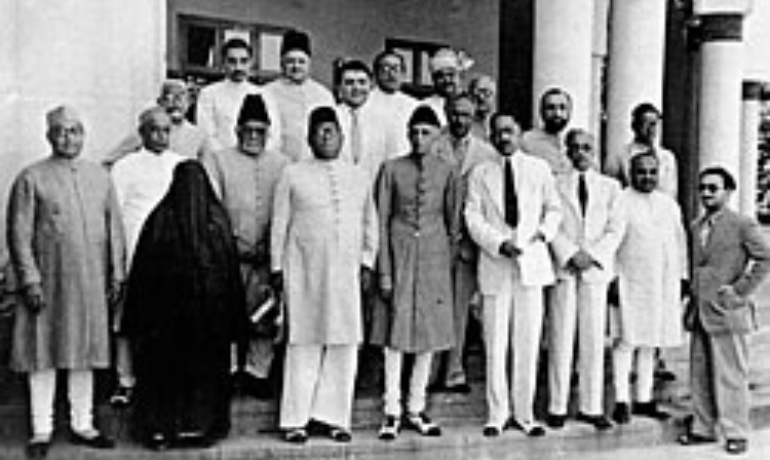The formation of the Muslim League in 1906 marked a significant turning point in the political history of India. Established as a response to the growing concerns of the Muslim community during British colonial rule, the Muslim League aimed to address their unique political, social, and economic challenges. Over time, it evolved into a powerful political force that played a crucial role in shaping India’s independence movement and the eventual partition of the subcontinent. This blog will discuss the origins, objectives, key figures, and lasting impact of the Muslim League, providing insights into its importance in the broader context of Indian history.
The Historical Context: Why Was the Muslim League Formed?
The early 20th century was a period of significant political and social upheaval in India. After the Indian National Congress emerged in 1885 as a platform for Indian representation, many Muslims began to feel that their interests were not adequately addressed. The INC’s leadership was predominantly Hindu, leading to concerns among Muslims that their political rights would be overlooked in the struggle for independence.
Additionally, the British colonial policies often exacerbated communal tensions between Hindus and Muslims, creating an environment of suspicion and mistrust. As Muslims felt increasingly marginalized, prominent leaders realized the need for a dedicated political organization that could advocate specifically for Muslim interests. This led to the establishment of the All-India Muslim League in 1906.
Key Founders of the Muslim League
The Muslim League was founded at a convention held in Dhaka (now Dhaka, Bangladesh), attended by key figures from various regions of India. Among the prominent founders were:
- Aga Khan: The first President of the Muslim League, Aga Khan played a pivotal role in uniting Muslims across India under a common platform. He believed in promoting the socio-economic development of the Muslim community.
- Mohammad Ali Jinnah: Although he would later become the leader of the League, Jinnah was initially part of the Congress. His role in the Muslim League grew over time, and he would later emerge as one of its most influential leaders.
- Sir Syed Ahmed Khan: Though not a direct founder, his ideas and educational initiatives laid the groundwork for Muslim political consciousness, emphasizing the need for political organization.
These leaders recognized that Muslims needed a distinct political voice to safeguard their rights and interests, ultimately leading to the establishment of the Muslim League.
Objectives of the Muslim League
The Muslim League was formed with several key objectives that aimed to address the concerns of the Muslim community:
- Political Representation: The League sought to ensure adequate representation for Muslims in legislative bodies, recognizing that their political rights needed to be protected.
- Promotion of Muslim Identity: The League aimed to promote a distinct Muslim identity and culture, advocating for the recognition of Muslims as a separate community within India.
- Protection of Rights: It sought to safeguard the social, economic, and religious rights of Muslims, ensuring that they were not marginalized in the political landscape dominated by the INC.
- Social Reforms: The Muslim League aimed to bring about social reforms within the Muslim community, focusing on education and economic upliftment.
Early Activities and Influence of the Muslim League
In its initial years, the Muslim League operated as a relatively moderate organization, primarily focused on lobbying for Muslim interests within the broader framework of Indian politics. The League began to hold annual sessions, where members would discuss issues affecting Muslims and strategize on how to address them.
The first session of the Muslim League was held in Lahore in 1908, where members emphasized the need for unity among Muslims. Over the years, the League started gaining influence, particularly among educated Muslims and political activists.
The League’s early activities included advocating for greater representation in the legislative councils established by the British, pushing for separate electorates for Muslims, and promoting educational initiatives aimed at uplifting the community.
The Shift in Strategy: The Emergence of the Two-Nation Theory
By the 1920s, the Muslim League’s stance began to shift significantly. Under the leadership of Mohammad Ali Jinnah, the League started advocating for the idea of a separate nation for Muslims, laying the groundwork for what would later be known as the Two-Nation Theory. This theory posited that Hindus and Muslims were distinct nations with their own customs, religion, and traditions, necessitating separate nationhood.
The change in strategy was influenced by several factors:
- Perceived Marginalization: Many Muslims felt that their rights and interests were increasingly neglected by the INC, especially as Hindu-Muslim tensions escalated in the political arena.
- Rise of Hindu Nationalism: The emergence of Hindu nationalist movements created further anxiety among Muslims about their future in a predominantly Hindu India.
- Desire for Political Power: The Muslim League sought to secure political power for Muslims and felt that a separate state was the only way to ensure their rights and identity.
Key Milestones in the Muslim League’s Journey
The Muslim League reached several significant milestones in its journey toward establishing a distinct political identity for Muslims in India:
- Lucknow Pact (1916): The Muslim League and the Indian National Congress came together in a historic agreement to demand greater self-governance from the British. This pact was a significant moment of unity, although it was short-lived.
- Communal Riots and Growing Tensions: The 1920s and 1930s were marked by increasing communal tensions, which pushed the Muslim League to adopt a more assertive stance in demanding rights for Muslims.
- Demand for Pakistan (1940): The Lahore Resolution, passed in 1940, was a turning point in the Muslim League’s trajectory. It called for the establishment of “independent states” for Muslims in the northwest and east of India, explicitly laying the groundwork for Pakistan.
- Role in Independence and Partition: As India moved toward independence in 1947, the Muslim League became a dominant force, advocating for the creation of Pakistan. The partition of India was a direct result of the League’s persistent demands, leading to the establishment of Pakistan on August 14, 1947.
Impact of the Muslim League on Indian Politics
The Muslim League’s influence on Indian politics was profound and far-reaching. Some of its key impacts include:
- Partition of India: The League’s demand for Pakistan led to one of the most significant geopolitical changes in the region, resulting in the partition of India and the creation of two separate nations: India and Pakistan.
- Communal Identity Politics: The emergence of the Muslim League contributed to the rise of communal identity politics in India, reshaping the political landscape in ways that continue to influence contemporary Indian politics.
- Representation of Muslims: The League established a framework for Muslim representation in Indian politics, prompting other communities to seek similar recognition for their rights.
- Legacy of Division: The legacy of the Muslim League is complex; while it played a crucial role in advocating for Muslim rights, it also contributed to the deep communal divisions that have persisted in India and Pakistan since independence.
Conclusion
The formation of the Muslim League in 1906 was a watershed moment in India’s political landscape. It arose from the need for a dedicated platform to advocate for the rights and interests of Muslims during a period of growing political consciousness and communal tensions. Over the years, the League evolved into a powerful political force, shaping the trajectory of India’s independence movement and leading to the eventual partition of the subcontinent.
Today, understanding the formation and evolution of the Muslim League is essential for grasping the complexities of India’s history and the ongoing interplay of communal identities in the subcontinent. The League’s legacy is a reminder of the challenges and triumphs faced by communities in their quest for representation, rights, and identity in a diverse nation.






